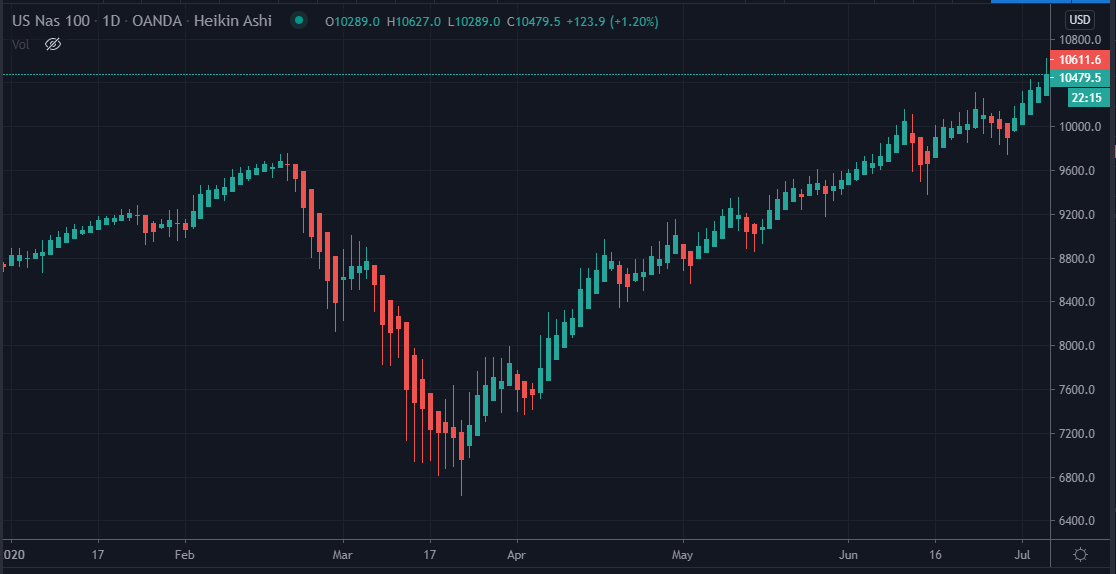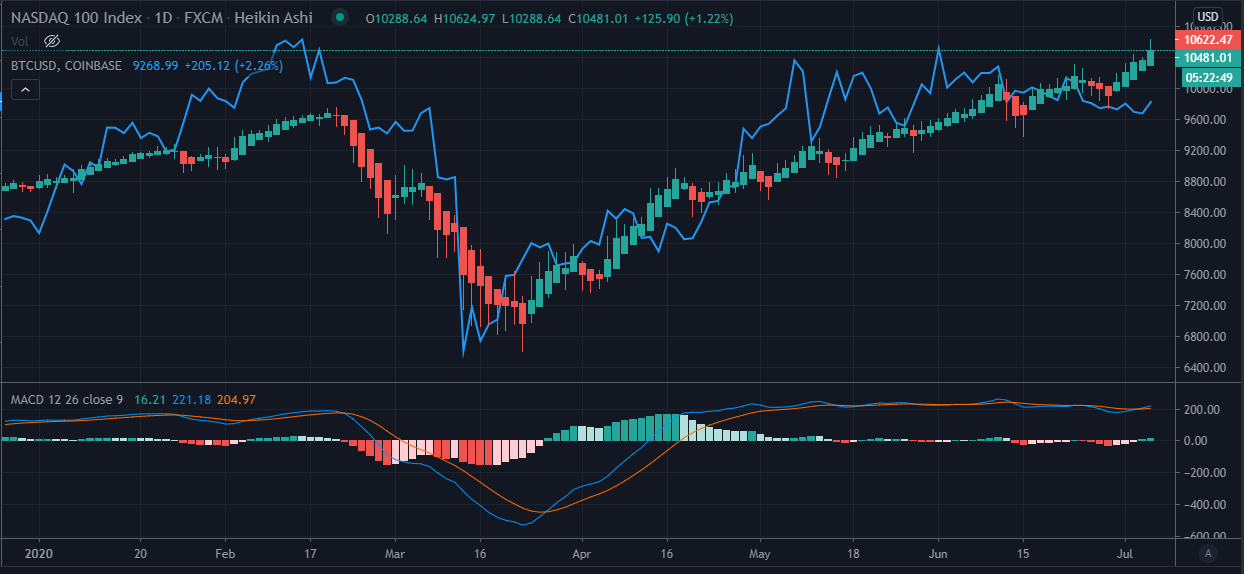The COVID19 / Bond Impact on Stocks and Crypto
Alex Wason and John Barry | Mon Jul 06 2020
The Federal Reserve Stimulus Leads to 0% Bonds
On March 15th, the Federal Reserve started the first round of its stimulus plan to stabilize the tumultuous economic conditions caused by the country-wide shut down due to COVID19. Significant was a $700 billion round of Quantitative Easing (QE) and the cutting of interest rates effectively to zero percent. The reaction of the stock market and most asset classes was to continue its downward trend that had started in late February. The Federal Reserve continued to make smaller policy changes during the next 8 days until March 23rd when it announced its “extensive new measures to support the economy”. In short, the Fed is expanding its QE program announced on March 15th and will be making additional expansions in the future as needed. This time Wall Street reacts positively, as March 23rd was the starting point of a historic bull run.
The Breaking of the 60/40 Model
The 60/40 model of portfolio allocation has been a traditional portfolio management strategy used for over 30 years. The strategy states to put 60% of your funds into stocks and the remaining 40% into high quality bonds. The philosophy behind this investment strategy is that by having your portfolio diversified this way, you won’t take a huge hit if your stocks go down because you’ll have returns from bonds to make up for it. This is a strategy generally used by people with low risk tolerances, or people who don’t want to constantly keep their eyes on the markets. Over the past few decades, the 60/40 model has demonstrated a good amount of success; however, there are many who believe the chances of this strategy continuing to function successfully into the future are very low.
Both JP Morgan and Bank of America have released statements on the decline of the 60/40 portfolio. JP Morgan strategists have stated “In the zero-yield world, which we think will be with us for years, bonds offer neither much return nor protection against equity falls,” referencing the fact that the majority of government bonds are trading at yields below 1%. In a research note titled “The Death of 60/40” Bank of America strategists had this to say, “The challenge for investors today is that both of those benefits from bonds, diversification and risk reduction, seem to be weakening, and this is happening at a time when positioning in many fixed-income sectors is incredibly crowded, making bonds more vulnerable to sharp, sudden selloffs when active managers rebalance.”
So, with diminishing trust and poor returns from bonds, many investors are looking for other assets to replace the 40% hole in their portfolios. Many are increasing their percentage allocated to stocks in addition to investing in Gold and other metals as a protection against inflation. Many investors are also looking to Bitcoin.
Asset Reallocation Flowing from Bonds to Stocks
The historical runup in stock prices, specifically for the tech heavy Nasdaq, started on March 23rd. With the NAS100 index up close to 60% (from $6,584 to $10,616) in less than 3 months. It's not showing any signs of slowing down. In the opinion of QuantifyCrypto, the major reason for this is the flow of capital that would normally be going into bonds is now going into stocks. Yes the Fed stimulus is positive, but can you say the market conditions are actually better for stocks when there is still uncertainty in the future? While some stocks are fundamentally better due to COVID19, this is not true for most stocks. The next chart shows the price movement of the NASDAQ 100 Index for 2020.

Asset Reallocation to Cryptocurrency – When?
When asked about the current demise of the 60/40 portfolio model, veteran investor Dan Tapiero stated there could be “nothing more bullish for gold and bitcoin,” and that we are in the midst of the “beginning of the end for [government] bonds as a functioning productive asset class. Traditional 60/40 portfolios will need to find a new defensive asset to replace a portion of the 40%.” It seems that other players in the world of finance are saying similar things, hedge fund manager Paul Tudor Jones told CNBC in May that Bitcoin is a “great speculation” and that he has one to two percent of his assets in Bitcoin.
Historically, Bitcoin and other cryptocurrencies tend to have higher volatility than stocks. Three days before the Federal Reserve started making its announcements, Bitcoin went down over 50% in a single day. High volatility and a full price recovery continued in April and May, with Bitcoin closing on May 30th at ~$10,440. Until this point, there had been a high correlation between the NASDAQ 100 and Bitcoin as shown in the chart below.

Since June 1st, Bitcoin has clearly lagged while stocks have continued their upward climb. While Crypto has been stagnant and down since May, the fundamental picture has never been better:
- The Central Bank stimulus response is inflationary to Fiat currencies, this is positive for non-inflationary assets like gold and cryptocurrency.
- The lack of new funds moving into bonds is flowing into stocks. When the stock market advance slows or starts to decline, the flow into other assets classes will start to increase.
- The full deflationary impact of the Bitcoin halving still has not kicked in.
- Corporate adoption and use cases for cryptocurrency is accelerating (Future article).
- Before COVID occurred, 2020 was looking like a very strong year for Bitcoin and Altcoins. This price strength is likely to return.
As government bonds continue to trade with yields below 1%, it is safe to say that more and more people will be abandoning the traditional 60/40 strategy. While it’s too early to determine what the new percent strategy will become, with Bitcoin presenting a clear solution to the problems with bonds and the diminishing value of cash, portfolio managers may very well be using cryptocurrency to solve their diversification requirement.
The platform Quantify Crypto provides live cryptocurrency prices, technical analysis, news, heatmaps and more. Our flagship product is the trend algorithm, designed to be on the correct side of significant cryptocurrency price moves. We are a new site, please check us out and let us know what you like and do not like about the site.
None of this is meant to be financial advice and I do not have any financial expertise. John Barry worked at the New York Stock Exchange for over 23 years, it was as a developer supporting computer systems, not as a stock trader. Alex Wason is an intern working for Quantify Crypto
Full discloser: John Barry owns Bitcoin and has stock positions.